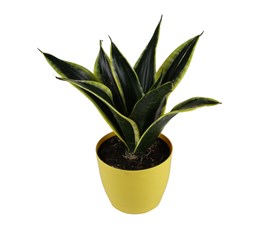How to Buy Healthy Houseplants: You Can Grow That!
Impressive indoor gardens are full of healthy plants. Ensure your houseplants keep looking their best by carefully choosing new plants for your collection.
An ailing plant can wreak havoc on the rest of your indoor garden, so make certain that new members of your houseplant family are in tip-top condition. Once a plant is ill, it’s challenging to bring it back to health, and it’s likely to infect other plants.


You have a better chance of buying healthy plants if you go to a reputable plant dealer that treats houseplants well. Such a store will have houseplants located indoors and away from direct sunlight in an area that is free of drafts. If you are unsure how well a nursery or home and garden center cares for its houseplants, ask management what day of the week they get their shipments, and arrive on that day to shop for plants right after they come off the truck.
Finding and buying a healthy houseplant is as much about recognizing signs of health as it is about spotting signs of sickness.
Signs of houseplant health
- Firm, new growth that seems normal in size and shape. New growth is a good indicator of current plant health.
- Plant is well-anchored in the soil.
- There are flower buds and new flowers.
- Leaves are uniform in color and have a healthy sheen.
- Roots are white or tan and firm.
- Plant is well-balanced and growing straight or hanging well.
- Your instincts tell you that the plant is healthy.
Signs of sickness
- Droopy, wilted leaves and sluggish or distorted growth are signs of fungal infection and root rot. This is especially likely if the soil remains wet, which indicates that the roots are infected and unable to absorb water.
- Plant is wobbly and has a squishy base, indicating fungal or bacterial disease.
- Brown or black squishy roots, which is another sign of root rot.
- Plant is pot-bound with a mass of circling roots filling up the container and very little soil. Such a plant has been starved of nutrients and water.
- Plant is leggy and appears to be leaning to one side. This indicates the plant received insufficient light.
- Lack of flower buds and new flowers.
- Leaves are distorted, shriveled, yellowing or fall off easily, which can indicate a number of cultural problems, including over- or under-watering, pests or inadequate lighting.
- Sticky residue on foliage, branches or the pot, indicating the presence of sap-sucking pests, such as aphids, scale and mealybugs.
- Visible pests. Look for troublemakers on the top and bottom of leaves, on the stems and where the leaf meets the stem. If you want to make double sure, bring a magnifying glass with you to the nursery and get a good look at the plant. Or place a piece of white paper next to the plant and gently shake foliage to see if anything falls off onto the paper. This is an especially effective method with spider mites, which will scurry around when they fall.
- Even if a plant appears healthy, it is always a good idea to quarantine it for 2 to 3 weeks before introducing it into your foliage family. This is enough time for hidden problems, such as pests and fungal infections, to appear.




